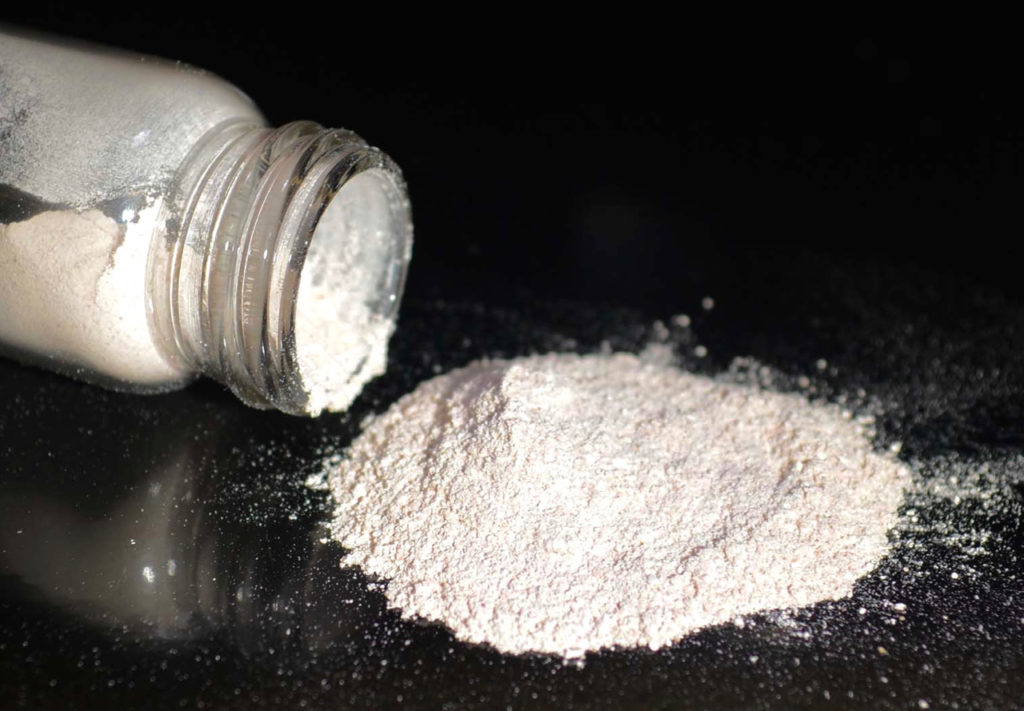Dietary supplementation essential for health, reproduction

Dietary lipids are important sources of highly digestible energy and the only source of the essential fatty acids needed by fish for normal growth and development. They are also carriers and assist in the absorption of fat-soluble nutrients such as sterols and vitamins A, D, E and K.
Lipids, especially phospholipids, are the main constituents of cellular structure that are important for maintenance of membrane flexibility and permeability. Other important functions of dietary lipids are as precursors of steroid hormones and prostaglandins, improving the flavor of feeds and affecting feed texture.
Essential fatty acid requirements
Tilapia, like other fish species and vertebrates, cannot biosynthesize C18 polyunsaturated fatty acids (PUFAs), linoleic acid (18:2 omega-6) or linolenic acid (18:3 omega-3). Thus, the compounds are termed essential fatty acids (EFA).
The qualitative and quantitative EFA requirements of fish vary among species. In general, freshwater fish like tilapia, which possess the ability to desaturate and chain elongate C18 EFAs to longer-chain highly unsaturated fatty acids (HUFAs) (18:2 omega-6 to arachidonic acid, 20:4 omega-6; and 18:3 omega-3 to eicosapentaenoic acid, 20:5 omega-3 and docosahexaenoic acid, 22:6 omega-3), only have a requirement for linoleic acid or linolenic acid, or both. In contrast, marine species that cannot perform this conversion at a sufficient rate have a dietary requirement for long-chain HUFAs.
Research on fatty acid requirements has shown that linoleic series fatty acids are dietary essentials for tilapia. The optimum dietary levels of the n-6 acids have been estimated at about 1 percent for redbelly tilapia (Tilapia zillii) and 0.5 percent for Nile tilapia (Oreochromis niloticus).
Other investigations evaluating the nutritional value of dietary lipid sources suggested that linolenic n-3 series fatty acids as well as omega-6 fatty acids are dietary essentials for Nile; blue, O. aureus; and hybrid tilapia, O. niloticus x O. aureus; because fish fed diets supplemented with oils rich in omega-3 fatty acids provided good growth and reproductive performance. However, it has been shown that the growth-promoting effects of omega-6 fatty acids were superior to those of the omega-3 series in red belly tilapia.
The optimum dietary requirements of tilapia for n-3 fatty acids have not been determined. It has been suggested that the presence of high dietary levels of either omega-6 or omega-3 may spare the requirement for the other. However, excessive levels of 20:5 omega-3 or 22:6 omega-3 HUFAs in diets severely deficient in n-6 can lead to abnormally high red and white blood cell counts, excessive mucus production and susceptibility to handling stress. Signs observed in tilapia fed diets deficient in omega-6 and omega-3 fatty acids are anorexia, poor growth, increased body content of 18:1 omega-9 and 20:3 omega-9, and swollen, pale and fatty livers.
Although tilapia can bioconvert C18 PUFAs to long-chain HUFAs, the rate of conversion is reportedly dependent on the fatty acid composition of the diet. The conversion is higher in fish fed vegetable oil diets rich in C18 PUFAs when compared to that in fish fed fish oil diets rich in long-chain HUFAs. However, based on tissue fatty acid composition and despite an increased rate of conversion, desaturation and elongation of 18:3 omega-3 were insufficient to maintain proportions of tissue 20:5 omega-3 and 22:6 omega-3 in fish fed the vegetable oil diet at the same level as fish fed the fish oil diet.
Nutritional value of lipid sources
A number of studies have evaluated the nutritional values of various lipid sources in diets of tilapia. Beef tallow and pork lard have been the least effective sources of dietary lipid. Their poor performance is attributed to the lack of omega-6 and/or omega-3 essential fatty acids, and the presence of high levels of saturated fatty acids. It has been demonstrated that saturated fatty acids with carbon lengths of 8 to 18 are not suitable lipid sources for tilapia.
Plant oils rich in 18:2 omega-6, such as soybean oil, corn oil, sunflower oil, canola/rapeseed oil and various palm oil products are equally good lipid sources for tilapia. Linseed or flaxseed oil rich in 18:3 omega-3 provided growth performance similar to that of fish fed plant oils high in omega-6 fatty aids, but at the beginning of the study, fish reluctantly consumed the linseed oil diet.
Information on the nutritional value of fish oils in tilapia diets is contradictory, even though the fish readily consumed feed containing fish oil. Pollock liver oil has been shown inferior to corn oil or soybean oil for redbelly and Nile tilapia. Other studies have indicated that Nile, blue and hybrid tilapia fed diets with cod liver oil or menhaden oil grew equally well or, in some studies, better than fish fed plant oil-containing diets. Satisfactory performance has been reported when various combinations of these lipid sources were used.
Dietary lipid sources also greatly influence the reproductive performance of Nile tilapia. In freshwater, the number of females that spawned, spawning frequency, number of fry per spawn and total fry production were poorest in broodstock fed the cod liver oil diet, while the best performance was obtained in fish fed the soybean oil diet. However, when reared in brackishwater at 7 or 14 ppt salinity, fish fed the diet containing cod oil or a mixture of soybean oil and cod liver oil had better reproductive performance than those fed the soybean oil diet.
Dietary lipid levels
Dietary lipids have a sparing effect on the utilization of dietary protein. The level of protein in diets for Nile tilapia can be reduced from 33.2 to 25.7 percent by increasing dietary lipid from 5.7 to 9.4 percent and carbohydrate from 31.9 to 36.9 percent. The sparing effect of dietary protein by increasing dietary lipid levels has also been reported in hybrid tilapia. However, tilapia do not tolerate as high a dietary lipid level as do salmonids. A lipid level over 12 percent depressed the growth of juvenile O. aureus x O. niloticus hybrids and increased the accumulation of carcass lipid. Another study with the same hybrid showed good growth and feed efficiency in fish fed 10 and 15 percent lipid diets.
A level of 5 percent dietary lipid appeared sufficient to meet the minimum requirement of this tilapia hybrid, but a level of about 12 percent was needed for maximum growth. For juvenile blue tilapia, growth substantially improved when menhaden oil or catfish oil was provided at 7.5 to 10.0 percent of the diet, with the best performance obtained for menhaden oil at 10 percent of the diet.
Thus, it appears that lipid levels ranging 5 to 12 percent are optimum in diets for tilapia. Commercial tilapia feeds for growout usually contain 5 to 6 percent total lipid, but high lipid levels of 10 to 12 percent are used in diets containing higher protein, such as those for small fish or fry, to maintain optimum protein:energy ratios and maximize utilization of dietary protein.
(Editor’s Note: This article was originally published in the November/December 2009 print edition of the Global Aquaculture Advocate.)
Now that you've reached the end of the article ...
… please consider supporting GSA’s mission to advance responsible seafood practices through education, advocacy and third-party assurances. The Advocate aims to document the evolution of responsible seafood practices and share the expansive knowledge of our vast network of contributors.
By becoming a Global Seafood Alliance member, you’re ensuring that all of the pre-competitive work we do through member benefits, resources and events can continue. Individual membership costs just $50 a year.
Not a GSA member? Join us.
Authors
-
Chhorn Lim, Ph.D.
Aquatic Animal Health Research Lab
990 Wire Road
Auburn, Alabama 36832-4352 USA -
Mediha Yildirim-Aksoy, Ph.D.
Aquatic Animal Health Research Lab
990 Wire Road
Auburn, Alabama 36832-4352 USA -
Phillip Klesius, Ph.D.
Aquatic Animal Health Research Lab
990 Wire Road
Auburn, Alabama 36832-4352 USA
Tagged With
Related Posts

Health & Welfare
10 paths to low productivity and profitability with tilapia in sub-Saharan Africa
Tilapia culture in sub-Saharan Africa suffers from low productivity and profitability. A comprehensive management approach is needed to address the root causes.

Health & Welfare
A look at tilapia aquaculture in Ghana
Aquaculture in Ghana has overcome its historic fits and starts and is helping to narrow the gap between domestic seafood production and consumption. Production is based on Nile tilapia.

Aquafeeds
A look at phospholipids in aquafeeds
Phospholipids are the major constituents of cell membranes and are vital to the normal function of every cell and organ. The inclusion of phospholipids in aquafeeds ensures increased growth, better survival and stress resistance, and prevention of skeletal deformities of larval and juvenile stages of fish and shellfish species.

Aquafeeds
A new nutrient for aquaculture, from microbes that consume carbon waste
Biotechnology firm NovoNutrients aims to produce a line of nutraceutical aquafeed additives as well as a bulk feed ingredient that can supplement fishmeal. Its process includes feeding carbon dioxide from industrial gas to a “microbial consortium” starring hydrogen-oxidizing bacteria.


